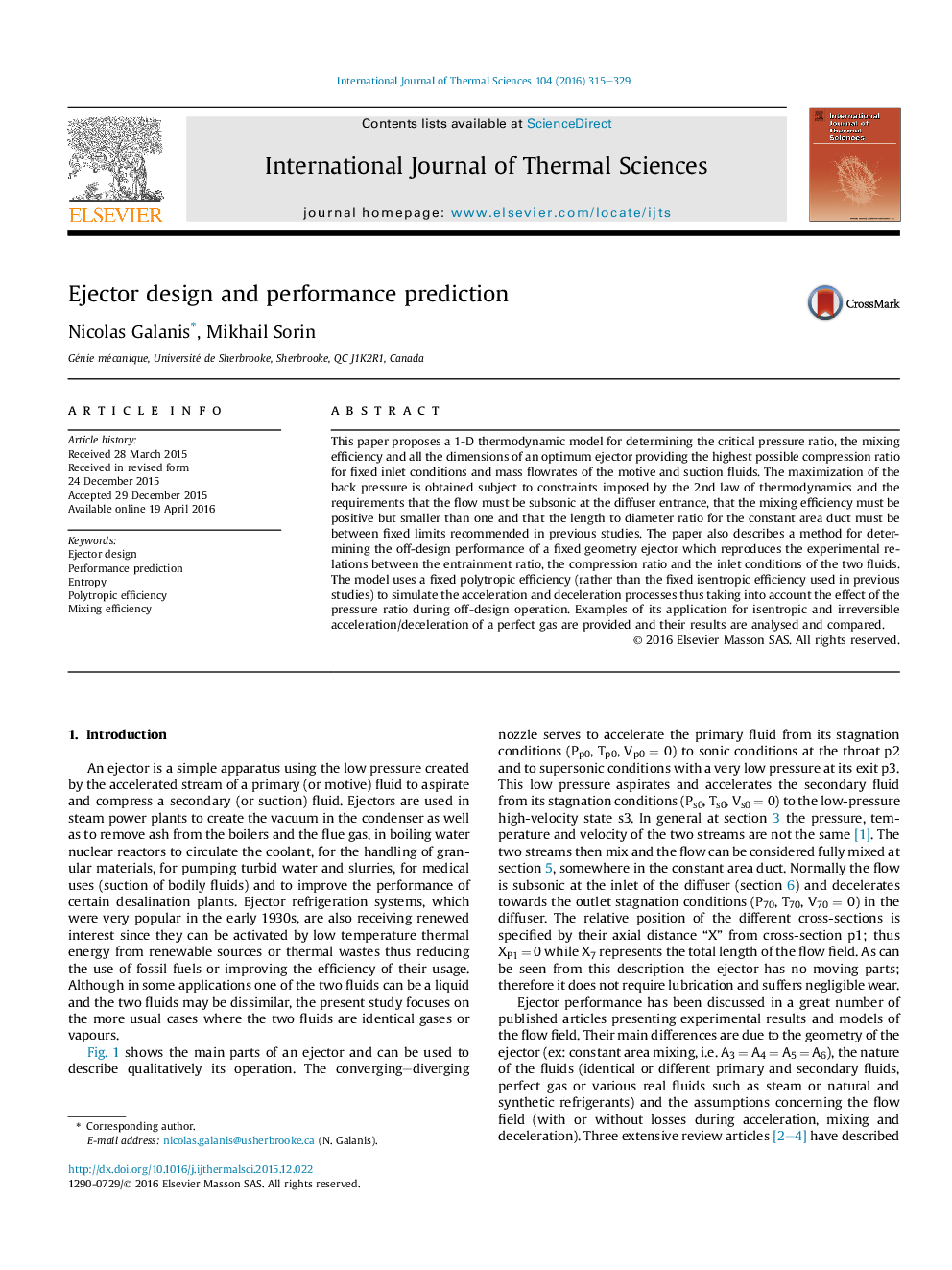| Article ID | Journal | Published Year | Pages | File Type |
|---|---|---|---|---|
| 667888 | International Journal of Thermal Sciences | 2016 | 15 Pages |
•Ejector model using polytropic efficiency for acceleration/deceleration processes.•Analytical expressions for irreversible flow of primary, secondary fluids are given.•Model gives all diameters & lengths, the mixing efficiency and the critical pressure.•Model predicts off-design performance with double- and single-choking.•Entropy profiles at design and off-design conditions are presented.
This paper proposes a 1-D thermodynamic model for determining the critical pressure ratio, the mixing efficiency and all the dimensions of an optimum ejector providing the highest possible compression ratio for fixed inlet conditions and mass flowrates of the motive and suction fluids. The maximization of the back pressure is obtained subject to constraints imposed by the 2nd law of thermodynamics and the requirements that the flow must be subsonic at the diffuser entrance, that the mixing efficiency must be positive but smaller than one and that the length to diameter ratio for the constant area duct must be between fixed limits recommended in previous studies. The paper also describes a method for determining the off-design performance of a fixed geometry ejector which reproduces the experimental relations between the entrainment ratio, the compression ratio and the inlet conditions of the two fluids. The model uses a fixed polytropic efficiency (rather than the fixed isentropic efficiency used in previous studies) to simulate the acceleration and deceleration processes thus taking into account the effect of the pressure ratio during off-design operation. Examples of its application for isentropic and irreversible acceleration/deceleration of a perfect gas are provided and their results are analysed and compared.
